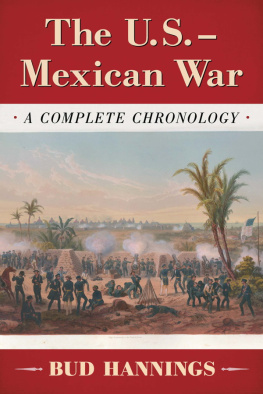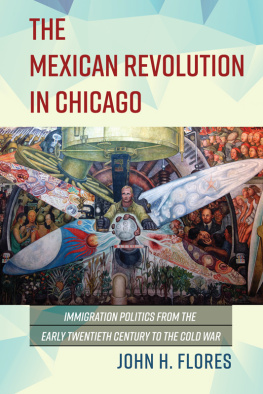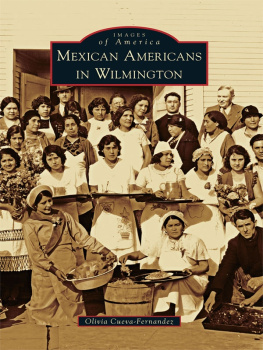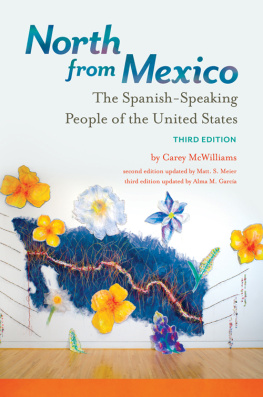2020 by the Board of Trustees
of the University of Illinois
All rights reserved
Library of Congress Cataloging-in-Publication Data
Names: Kanter, Deborah E, 1961 author.
Title: Chicago catlico: making Catholic parishes Mexican / Deborah E Kanter.
Description: Urbana: University of Illinois Press, 2020. | Series: Latinos in Chicago and the Midwest | Includes bibliographical references and index.
Identifiers: LCCN 2019040151 (print) | LCCN 2019040152 (ebook) | ISBN 9780252042973 (cloth) | ISBN 9780252084843 (paperback) | ISBN 9780252051845 (ebook)
Subjects: LCSH: Hispanic American CatholicsReligious life. | Catholic ChurchIllinoisChicagoMembership. | Church work with Hispanic AmericansCatholic Church. | United StatesEmigration and immigration. | MexicoEmigration and immigration.
Classification: LCC BX1407.H55 K36 2020 (print) | LCC BX1407.H55 (ebook) | DDC 282/.773110896872dc23
LC record available at https://lccn.loc.gov/2019040151
LC ebook record available at https://lccn.loc.gov/2019040152
To the very generous peopledel pasado, del presenteof St. Francis of Assisi, St. Adalbert, St. Ann, St. Paul, St. Pius V, St. Procopius, and Providence of God. To the generations of Chicagoans to come, from Mexico and around the world .
Acknowledgments
IT TOOK A LEAP OF FAITH to go from work on colonial Mexican ethnohistory to twentieth-century Chicago, Mexican, and Catholic history. I basically started at square one in the fields of U.S. urban and Catholic history. Fortunately I found good counsel from many scholars along the way. I considered the possibilities of a Mexican Chicago project while in residence at the Newberry Library: essentially sneaking out to other archives. Jim Grossman sensed promise in the topic and urged me to read John McGreevys Parish Boundaries . That crucial book made me rethink essential questions about urban life, history, and the black-white binary that so characterized the Chicago of my childhood.
On my first day at the archive, I met Malachy McCarthy, then completing his dissertation on Catholic and Protestant outreach to Mexicans before 1940. Malachy welcomed my explorations, generously offered leads and introductions, and patiently answered my ignorant questions about Catholic history. Over the eighteen years it took me to complete this project, he has offered support and encouragement. When my ambitions lagged, he helped jumpstart my vision of the research. I treasure our travels from Pittsburgh to Austin, from Momence to Mundelein.
In 2001 my father mailed me an article from the Chicago Tribune Magazine: Patrick Reardons thoughtful The Americanization of the Lunas. I contacted Luna family historian Cesar Garza. Soon Cesar shared family photos and introduced me to people from St. Francis of Assisi (who, in turn, opened up a network of fabulous people). Cesar generously invited me to the Luna family reunion in Chicago and, another year, in Monterrey, Mexico. I learned a great deal from spending time with this warm, transnational family who made me feel included on both sides of the border.
When I read Tim Matovinas Guadalupe and Her Faithful , I found the kind of work I aspired to. Still I questioned my ability to pull off the deep research of place, multiple perspectives, and evolving identities that Tim had masterfully pulled together. A decade later, Tim asked me if my book was ready. His question made me realize that my scattered papers and articles were the makings of a book. Tim has been a wise, generous colleague in the ups and downs of writing this book.
I received much early encouragement from Peter Alter, the late Peter DAgostino, Robert Devens, Leon Fink, Rita Arias Jirasek, the late Arturo Rosales, and Carlos Tortolero. Visits to the National Museum of Mexican Art offer steady inspiration. I am ever grateful for sustained connections with Chicago scholars Rima Lumin Schultz and Ellen Skerrett: together, we share a passion to reframe the history of the Near West Side. I owe a great deal to the communities of scholars I have worked with at the Newberry Library Latino/Borderlands Seminar, the American Catholic Historical Association, and the Chicago Urban History Seminar. I can hardly express my appreciation for the CEHILA-USA members with whom I share work, conversations, and fellowship.
From conferences and seminars, to Facebook and email, I feel supported by fellow researchers Ren Alvarez, Gerry Cadava, Sergio Gonzlez, Felipe Hinojosa, Cheryl Ganz, Myrna Garca, Cristina Heisser, Tim Hernandez, Michael Innis-Jimnez, Benjamin Johnson, Nicole Marroquin, Kristen Mc-Cleary, Michael McCoyer, Eduardo Moralez, Tim Neary, Elaine Pea, and Bob Wright. Thanks to my friends, many of whom read or talked about pieces of this book, including Marcos Alcaine-Soto, Chris Blaker, Carrie Booth-Walling, Chris Burgess, Laura Day, Wes Dick, Mike Elliott, Riva Feshbach, Ann Davis Garvin, Liz Goetz, Anne Heise, Joe Ho, JaShong King, Amy Lesemann, AJ Mattson, Marcy Sacks, and John Thiels, Extra thanks to my it takes a village, final proof readers! Laura Brade provided Czech language translations. I love a good walk around Pilsen and learned much by doing so in the company of John Brady, Michael McCoyer, the late Francisco Mendoza, David Diego Rodrguez, and the historians that took part in my Churches of Pilsen tour.
Archivists and librarians have helped at many places. I owe a special thanks to Hctor Hernandez at the Rudy Lozano branch of the Chicago Public Library; Julie Satzik and Megan Romero Hall at the Joseph Cardinal Bernardin Archives & Records Center; Fr. James Flint OSB of the St. Procopius Abbey Archives; Sr. Margaret Zalot SSC of the Sisters of St. Casimir Archive; the Sisters of St. Francis in Joliet; Paul Nemecek and volunteers at the Czech & Slovak American Genealogy Society of Illinois; and Steve Balkin and Lori Grove of the Maxwell Street Preservation Society. At the Claretian Missionaries Archive, Malachy McCarthy and Doris Cardenas have been true collaborators and always make me feel at home on Monroe Street.
Fiction writers including Sandra Cisneros, Stuart Dybek, Philip Kolin, Hugo Martnez-Serros, Alice McDermott, and Salvatore Scibona inspire me with their musings on neighborhoods, families, and being Catholic in past times. This book took a fundamental pivot because of a conversation I had at the Providence of God School reunion. One alumna asked me if my book would be like one he had loved, Luis Alberto Urreas The Hummingbirds Daughter . That question made me re-think the end product. Could I write a book that was more story driven? Could I write a history that people might enjoy reading? Carol Spindels creative non-fiction workshop at the Iowa Summer Writing Festival gave me the boost to think of myself as a writer and to break out, somewhat, from academic conventions. Students in my Mexican American history classes at Albion College read drafts, offered comments, and suggested I was on the right track.








